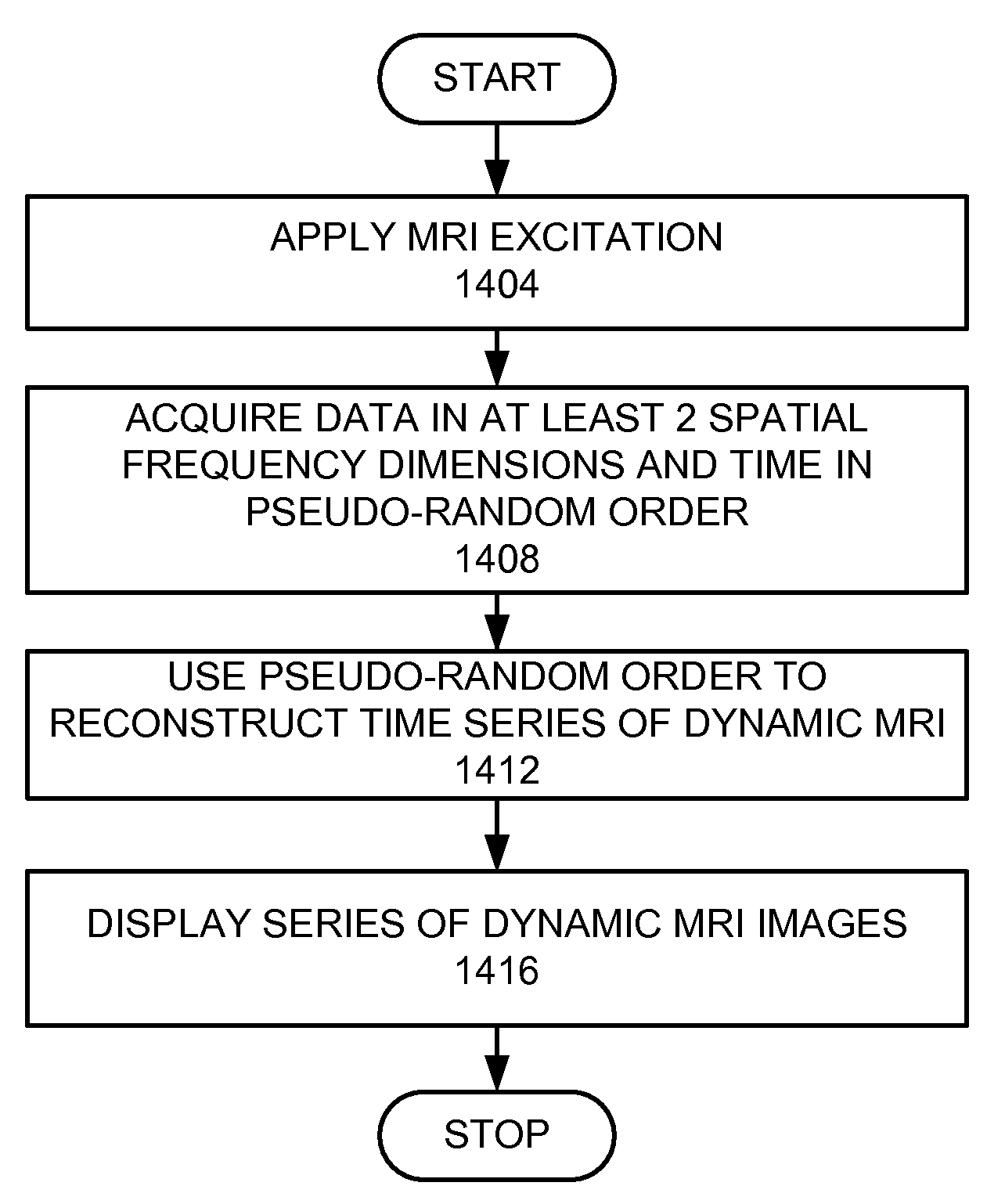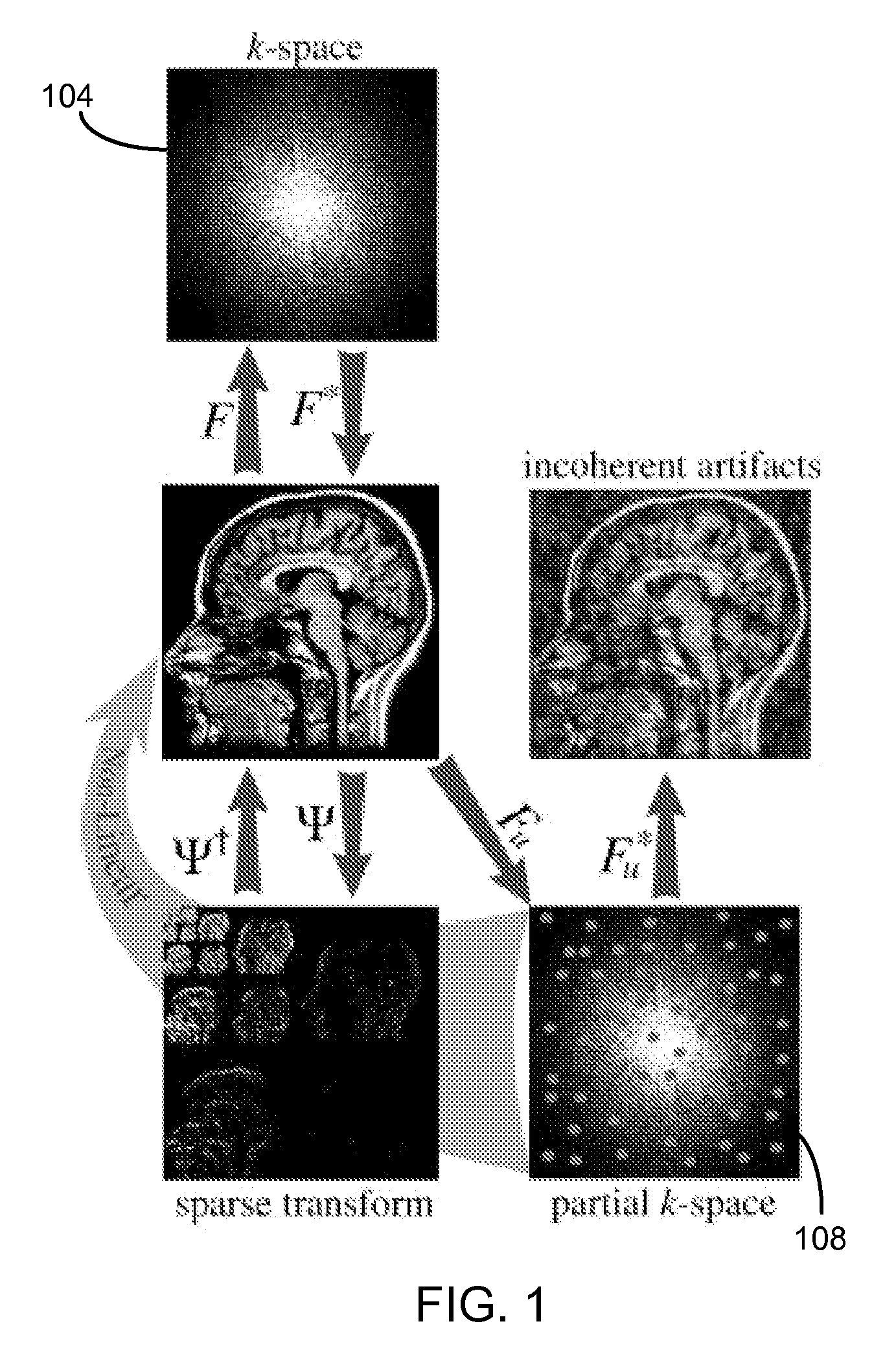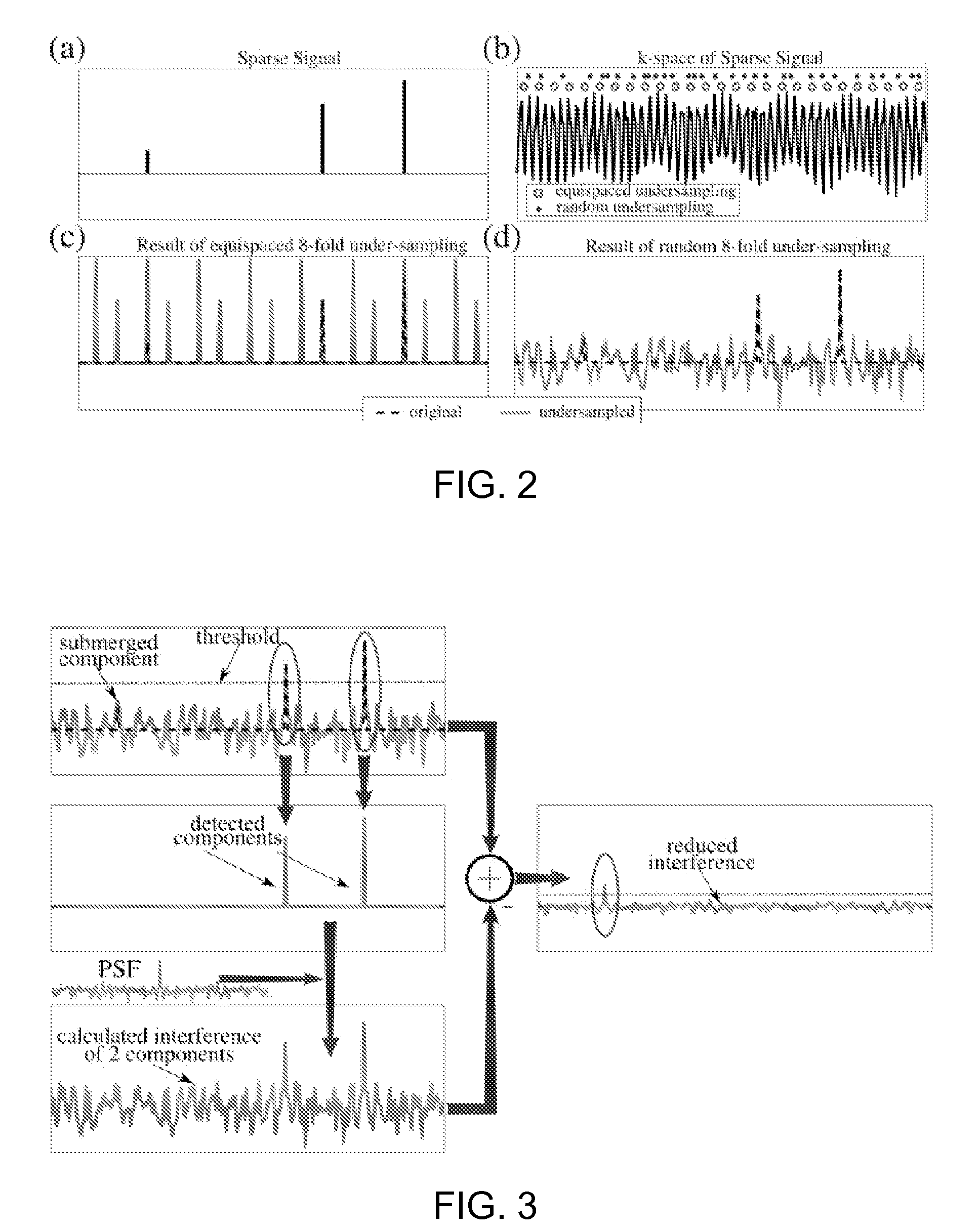K-t sparse: high frame-rate dynamic magnetic resonance imaging exploiting spatio-temporal sparsity
a dynamic magnetic resonance imaging and spatiotemporal sparsity technology, applied in the field of magnetic resonance imaging, can solve the problems of preventing its use in important applications, requiring a relatively long scan time, and limiting the success of rapid change of settings
- Summary
- Abstract
- Description
- Claims
- Application Information
AI Technical Summary
Problems solved by technology
Method used
Image
Examples
Embodiment Construction
[0034]The MRI data acquisition can be accelerated by undersampling k-space—simply collecting fewer data samples. When k space is undersampled, the Nyquist criterion is violated, and Fourier re-constructions exhibit aliasing artifacts. Many previous proposals for rapid imaging try to mitigate undersampling artifacts. They fall in three groups: (a) Methods generating artifacts that are in-coherent or less visually apparent, at the expense of reduced SNR; (b) Methods exploiting redundancy in k-space, such as partial-Fourier, parallel imaging etc; and (c) Methods exploiting either spatial or temporal redundancy or both.
[0035]An embodiment of this invention exploits the sparsity which is implicit in MR images, and develops an approach combining elements of approaches a and c. Implicit sparsity means transform sparsity, i.e., when the underlying object to recover happens to have a sparse representation in a known and fixed mathematical transform domain. To begin with, the identity transfo...
PUM
 Login to View More
Login to View More Abstract
Description
Claims
Application Information
 Login to View More
Login to View More - R&D
- Intellectual Property
- Life Sciences
- Materials
- Tech Scout
- Unparalleled Data Quality
- Higher Quality Content
- 60% Fewer Hallucinations
Browse by: Latest US Patents, China's latest patents, Technical Efficacy Thesaurus, Application Domain, Technology Topic, Popular Technical Reports.
© 2025 PatSnap. All rights reserved.Legal|Privacy policy|Modern Slavery Act Transparency Statement|Sitemap|About US| Contact US: help@patsnap.com



